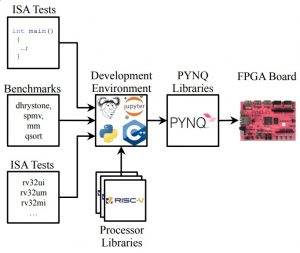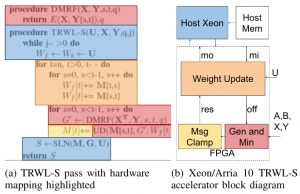 Higher-Order Functions are a common and convenient way to encapsulate design patterns in software development. However, they are not readily available in hardware design tools. This is because they rely on memory allocators to implement dynamic lists, polymorphism, and looping. These concepts are not very amenable to hardware synthesis.
Higher-Order Functions are a common and convenient way to encapsulate design patterns in software development. However, they are not readily available in hardware design tools. This is because they rely on memory allocators to implement dynamic lists, polymorphism, and looping. These concepts are not very amenable to hardware synthesis.
Dustin presented a solution to this problem in the paper “Higher-Order Functions for C++ Synthesis” at CODES+ISSS as part of Embedded Systems Week. The project develops a library of higher-order functions for C++ High-Level Synthesis tools. We open-sourced these libraries and we hope that you use them. Check that out on github: github.com/drichmond/hops (hops stands for Higher-Order PatternS and also an ode to one of our favorite beverages.). ESWeek was in Torino, Italy so Dustin also found some free time to visit Mont Blanc (pictured).

